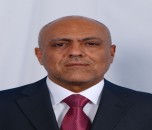Keynote Forum
Mohammad A. AlShammari,
Kuwait Ministry of Health, Kuwait
Keynote: Why are we still saving teeth? The revival of microsurgery in the implant epoch
Time : 09:20:00

Biography:
Mohammad A. AlShammari is an Endodontist recently graduated and qualified from the Kuwait Board of Endodontics. He qualified from Jordan University of Science & Technology in 2016, then he worked at Kuwait Ministry of Health during his training year he applied for Kuwait board program & got accepted. During the first of the program, he was awarded the MFD (RCSI) from the Royal College of Surgeons in Ireland in 2018, Elected as the Chief Resident. Alshammari has a special interest in endodontic microsurgery and had treated many varieties of cases during the past few years.Mohammad A. AlShammari is an Endodontist recently graduated and qualified from the Kuwait Board of Endodontics. He qualified from Jordan University of Science & Technology in 2016, then he worked at Kuwait Ministry of Health during his training year he applied for Kuwait board program & got accepted. During the first of the program, he was awarded the MFD (RCSI) from the Royal College of Surgeons in Ireland in 2018, Elected as the Chief Resident. Alshammari has a special interest in endodontic microsurgery and had treated many varieties of cases during the past few years.
Abstract:
In the dental implant epoch, the trend seems to be to extract compromised teeth and replace them with implants. Yet, the long-term prognosis of teeth might not be comparable with the prognosis of dental implants. Complications, failures, and diseases such as peri-implantitis are not rare, and, despite the belief, implants are not 99% successful. Other treatment options that aim to save compromised teeth such as microsurgery, intentional replantation, and autotransplantation should be considered on an individual basis. With the advent of surgical techniques and instruments, the clinical and radiographic outcomes of endodontic surgery have been dramatically improved, these treatments have competing success rates to dental implants. And more importantly, it retains the natural tooth in the dentition for a longer period of time. a

